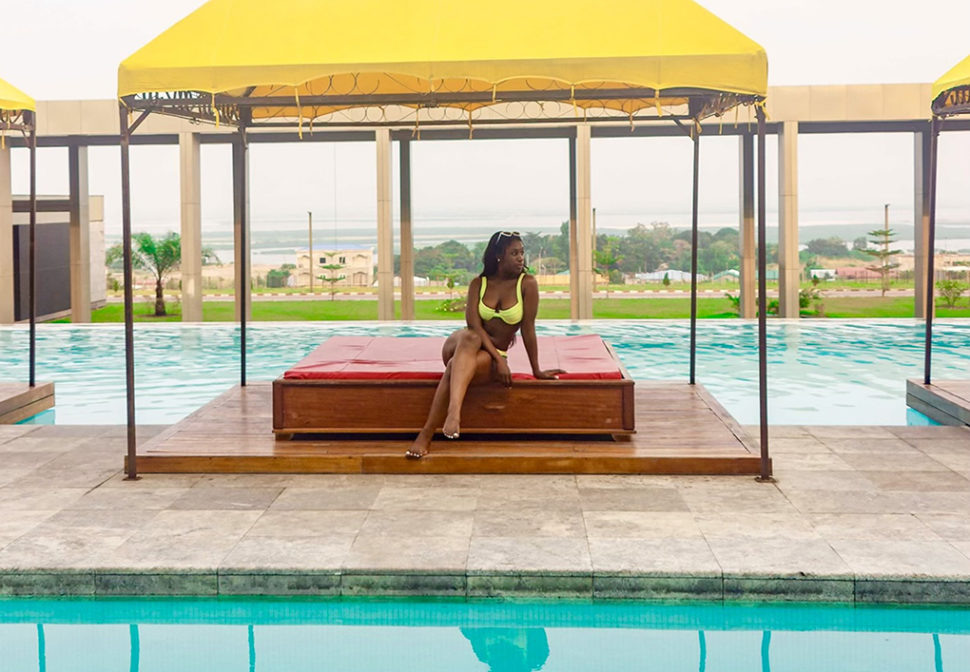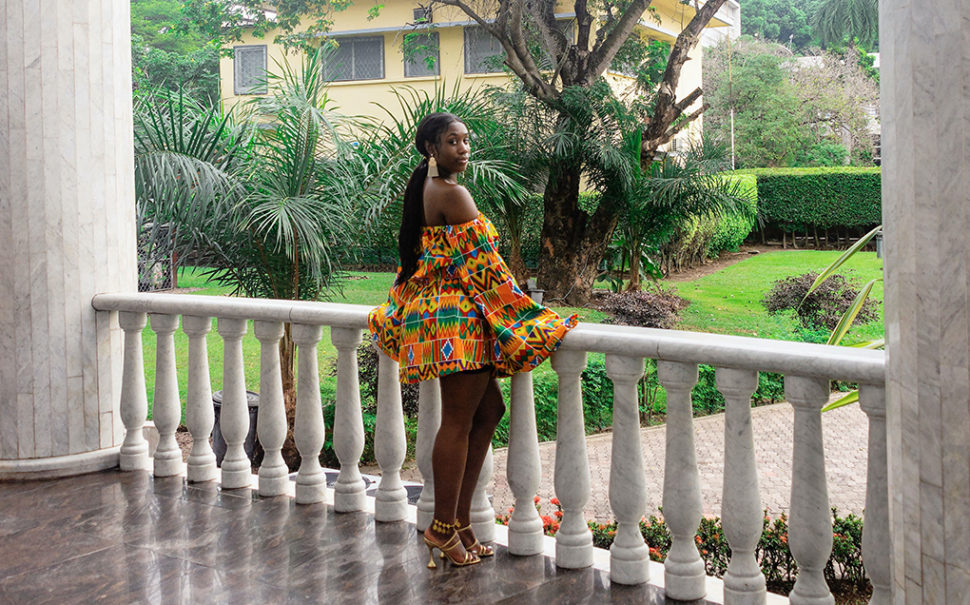Avid traveler Amina Mamaty has experienced many countries, but few trips carried as much meaning and personal connection for her as her recent trip to her father’s homeland, the Republic of the Congo.
The 30-year-old casting producer was born and raised in Paris and moved to the U.S. alone at the age of 17. However, she will never forget that she is, first and foremost, an African woman. Now based in Brooklyn, Amina’s mother is Malian while her father hails from Congo-Brazzaville.
Many people are not aware that there are two separate countries both called Congo. What was once one nation split after being colonized by two different countries. The Republic of the Congo, also known as Congo-Brazzaville, was colonized by France; and the Democratic Republic of Congo, also known as Congo-Kinshasa, was colonized by Belgium.

Separated by the Congo River, there are both similarities and stark differences between the two countries, despite their shared roots. The nations use two separate currencies. And in terms of population, Congo-Brazzaville is much smaller than Congo-Kinshasa. In fact, the capital of Congo-Kinshasa alone, is home to 17 million people, while the entire Congo-Brazzaville has a total population of 5 million people.
“We use different currencies,” says Amina. “Both Congos use French as its official language, as well as the local language, Lingala. However, when Congolese-Brazzaville people speak Lingala, they typically use a few words of French here and there in their sentences. Congolese-Kinshasa people usually don’t.”
Amina’s recent trip marked her return to the motherland in 16 years. Prior to this trip, she had only been to Congo once when she was 14, at an age where she was too young to truly explore and appreciate the country the way she can now.

“Now that I am older, I think it’s very important for people to know about their culture. It helps make sense of who you are and that’s a beautiful thing. This time I was able to ask questions, explore, and see where my father grew up. I was able to see my grandmother again and meet family members I never got to meet before.”
One of the first things Amina noticed that was different from before was that many more West Africans, such as Senegalese and Malians, have been migrating to Congo over the past few years.
“They have opened a lot of businesses and built families with Congolese. It’s a beautiful thing to see. Usually people from the continent dream of going to Europe or the U.S., but this shows that Africans also migrate to other African countries.”

Some of Amina’s favorite cultural elements she enjoyed in the Republic of the Congo were the amazing cuisine and the music. A huge part of Congolese culture, the main genre of music is called rumba, and Amina says it is impossible not to get up and dance when you hear it.
“Let it be known that Congo has the best male dancers on the continent, hands down! They know how to move their waist! Pre-COVID, bars all over the capital used to have different bands playing music all night long. It has changed a bit with the pandemic, but soon everything will be back to normal.”
Another part of the country’s culture, which Amina proudly participated in, is a concept known as La Sape. An abbreviation of the phrase “Société des Ambianceurs et des Personnes Élégantes” (French for “Society of Ambiance-Makers and Elegant People”). La Sape is a unique subculture in both Congos in which individuals, known as sapeurs, dress to impress in imported luxury designer fashions.

“La Sape is a lifestyle. I would describe it as European fashion with an African twist. It is a fashion movement, however, it’s not just about wearing nice suits. It’s the way they walk and talk, as well. It is about being confident regardless of your social status and circumstances. A lot of sapeurs don’t have much, but La Sape is what keeps them going. They’re taxi drivers, housekeepers, or gardeners by day, and sapeurs by night!”
The sapeurs dress up and meet at bars or in the streets for best-dressed contests. Now, the Republic of the Congo has finally officially accepted La Sape, recognizing that it is a true aspect of Congolese culture. Each September, there is a festival hosted just for the sapeurs in which they parade in the streets of the capital for the entire day. The sapeurs have become so popular over the years that people from all over the world come to Congo to see them for themselves and to photograph them.

After spending time hanging out in Moungali with the sapeurs, Amina ventured to Kintele, a fairly new, up-and-coming neighborhood in the capital.
“It is not as busy as other areas in the city of Brazzaville and definitely gives you a suburban feel. A lot of cute hotels are being built there to attract more tourists. Grand Hotel de Kintele is one of the most popular hotels in that area right now. It has a beautiful swimming pool with a view of the Congo River and is definitely a must-see when visiting!”

Next, Amina visited the controversial Pierre Savorgnan de Brazza Memorial, a beautiful marble mausoleum/memorial built to honor the French-Italian ‘explorer’ as the ‘founder’ of Brazzaville. The memorial cost the country $10 million to build.
Many Congolese are in favor of the memorial, and believe it is merited. Others, however, want nothing more than to see it reduced to dust, wondering why a colonizer deserves such a memorial. Amina believes that although the memorial is beautiful, the money could have been put to better use elsewhere.
“The money could have been used to renovate buildings or create better infrastructure for the people of Congo and the country. Because of how much it cost, I don’t think it would make sense to destroy it, but I think it should serve as something else. We should highlight our own people instead of celebrating outsiders who came in, hid behind the title of ‘explorer’, and changed the story of our land and people.”

Amina also explored Sakana Island, a small island on the Congo River accessible by a short five to ten-minute speedboat ride. With its beach, villas, restaurant, and pool, the island makes for a great day or weekend trip for those looking to get away from the city life, which she absolutely recommends doing.
“When you get out of the city, there are so many things to explore as far as wildlife, volcanoes, rainforests, etc. The scenery is out of this world once you venture out. There are so many hidden gems to discover.”
These are just a few of the many reasons Amina believes everyone should make it their business to visit the Republic of the Congo.

“In a few years Congo is going to become extremely popular as a destination in Africa and I think the best time to go is now, while it’s still very much raw and not yet crowded. The wildlife is unmatched, the views are everything, and the music and food is absolutely amazing!”
Next week, Amina is heading to Bolivia, as she works her way through her list of underrated countries she wants to visit.
“I really want to inspire people to explore the world a little further. There are so many countries, such as the Congo, that are beautiful but not popular, and that’s where I want to inspire you to go!”
You can follow Amina at @missyounginternational.
Related: Anifa Mvuemba Wows The World With A Virtual Fashion Show Inspired By Her Congolese Roots





